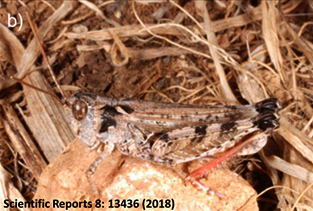Impact of historical vs. anthropogenic factors on processes of genetic fragmentation
Inferring the demographic history of species is fundamental for understanding their responses to past climate/landscape alterations and improving our predictions about the future impacts of the different components of ongoing global change. Estimating the time-frame at which population fragmentation took place is also critical to determine whether such process was shaped by ancient events (e.g. past climate/geological changes) or if, conversely, it was driven by recent human activities (e.g. habitat loss). Genomic data were employed to determine the factors shaping contemporary patterns of genetic variation in the Iberian cross-backed grasshopper Dociostaurus crassiusculus, an endangered species with limited dispersal capacity and narrow habitat requirements. Analyses indicate the presence of two ancient lineages and three genetic clusters resulted from historical processes of population fragmentation (~18–126?ka) that predate the Anthropocene. Landscape genetic analyses indicate that the limits of major river basins are the main geographical feature explaining large-scale patterns of genomic differentiation, with no apparent effect of human-driven habitat fragmentation. Overall, this study highlights the importance of detailed phylogeographic, demographic and spatially-explicit landscape analyses to identify evolutionary significant units and determine the relative impact of historical vs. anthropogenic factors on processes of genetic fragmentation in taxa of great conservation concern. informacion[at]ebd.csic.es: González-Serna et al (2018) Using high-throughput sequencing to investigate the factors structuring genomic variation of a Mediterranean grasshopper of great conservation concern. Scientific Reports. Doi 10.1038/s41598-018-31775-x
https://www.nature.com/articles/s41598-018-31775-x#Abs1








 Las altas temperaturas están provocando que las lagunas y las marismas de Doñana pierdan agua rápidamente
Las altas temperaturas están provocando que las lagunas y las marismas de Doñana pierdan agua rápidamente



